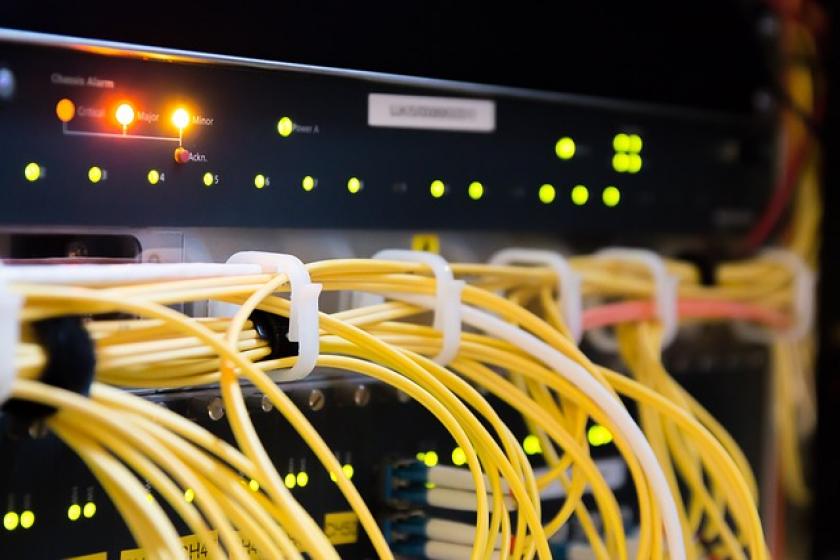Will Your Copper Cable Plant Support Multigigabit?
While many believe all that’s required is a switch upgrade to support multigigabit, you also must determine if your copper cabling is up to the task.
October 24, 2019

According to a recent report by Dell'Oro, approximately 290 million multigigabit switch ports will be deployed over the next five years. Many of these switch ports are likely to be an upgrade to traditional 10/100/1000 BASE-T ports commonly installed in the access layer.
The reason for the upgrade to multigig is that many devices are beginning to require speeds greater than 1 Gbps. This includes Wi-Fi 6 access point deployments and performance-hungry IoT devices. While many believe that they can simply get by with a switch upgrade in the network closet to get to multigig, one must consider whether the copper cabling they'll be using is also up to the task. With 2.5, 5, and 10 Gbps Ethernet, shortcuts made in the type of cable used, it's length, and the quality of install are going to rear their ugly head far more often. To make sure you don't run into issues that cause multigigabit connection issues, a few copper cabling verification steps are recommended.
The first verification step is to understand the type of copper cabling installed in areas where you are seeking to upgrade to multigigabit Ethernet. You’ll likely find a mixture of Category 5e, Category 6, and Category 6A cables. You may even find some older Category 5 cabling in some locations. All these cable types can run 1000BASE-T Ethernet up to 100-meters in length without trouble. However, multigigabit requirements are stricter. Both 2.5 and 5 Gbps Ethernet requires a minimum cable standard type of Category 5e or better. While you may get a link light – and even pass traffic – if you run over non-recommended cable types, you run the risk of physical-layer errors wreaking havoc on new multigigabit deployments. Additionally, if you need to run 10 Gbps Ethernet over copper, then it's highly recommended that you run Cat 6a or better cabling. Keep in mind, this also includes using Cat 6A patch cables inside the network closet or on the device end.
The quality, length, and install workmanship is also a major factor when it comes to multigigabit. When you begin pushing the copper to run at faster speeds, flaws in the cable plant become more easily exposed. For example, a 1 Gbps connection on a Cat 6 cable may be able to operate fine past the recommended 100-meter maximum length. Yet, using the same cabling on a 10 Gbps link can result in a loss of connectivity. The same goes for the quality of the cabling used and whether the installer took shortcuts in running cables over fluorescent lighting or electrical wiring.
To truly guard against any unforeseen copper cabling issues when upgrading to multigigabit Ethernet, a second verification step is required. Multigigabit simulation tests should be run to verify that the cable plant can operate at the required speeds. Modern copper validation and certification test tools can be used to test each copper run to ensure it operates properly at various multigigabit speeds. These tests produce detailed measurement results, including typical wire-maps, cable length checks, and signal to noise (SNR) ratios. Some testers also test for DC unbalance and transverse conversion loss (TCL). All test results eventually show a pass/fail status as it relates to running at the different 2.5, 5, and 10 Gbps speeds.
There will be those that will opt to “roll the dice” and assume their copper cable plant can handle multigig speeds. While some may get lucky, others won’t be as fortunate. For those that discover cabling issues post-deployment, it could lead to serious delays and unexpected costs. Thus, the better choice will be to assume that the internal copper cable plant is suspect – and build proper testing and cable plant upgrades into the project budget. Only then will you truly know that your cable plant is capable of running at multigigabit speeds.
About the Author
You May Also Like




